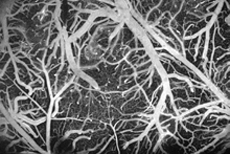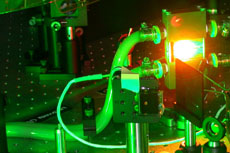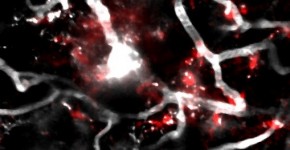
Clinical evidence shows that ischemic and hemorrhagic microvascular lesions in the brain play an important role in elderly dementia, but few effective treatment or preventative strategies exist. This deficit is due, in part, to a lack of good animal models of these small-scale strokes that would allow the progression of disease to be studied and would provide a platform for the evaluation of therapeutics.

One way to elucidate the function of part of a system is to disrupt and break that part and observe the effect. Using molecular biology tools, this method has led to a better understanding of the genetic origins of many diseases through studies of knock-out and knock-in transgenic animals, for example. While such genetic manipulation technologies are very advanced, techniques for physical disruption, especially of very fine-scale or difficult to access structures, remain crude. Development of technologies that allow specifically targeted structures to be disrupted with sub-micrometer spatial precision, without significant collateral effects, and in native, in vivo environments would open the door to a variety of studies that could match the impact transgenic experiments have had.

We use the nonlinear interactions between femtosecond laser pulses and transparent materials as a means to produce micrometer-scale alteractions of the properties of the material. We can ablate material, producing a hole, or produce more subtle refractive index changes. With these tools, we can directly write three-dimensional patterns of optical waveguides and microfluidic channels into a transparent material, for example. In addition, a focus of our research is the development of a comprehensive understanding of the nonlinear interaction mechanisms between femtosecond pulses and transparent matter.